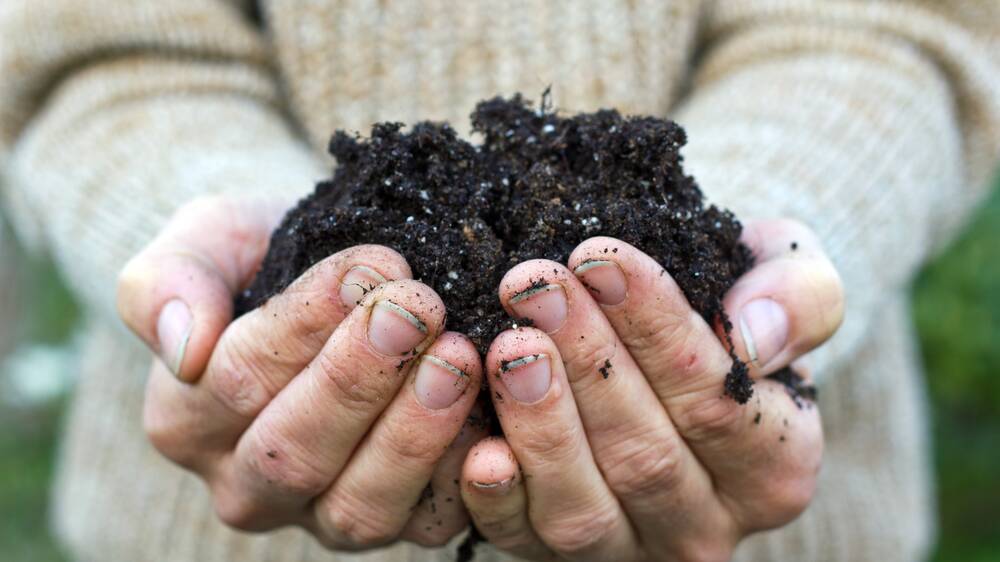
The first of the double pink camellias have opened overnight, to bloom all winter. The gingko leaves are fluttering down under a blue sky after the snow, and I am heading outside in boots, thermals, and thick woolly jumper with a chainsaw to attack the greenery.
Subscribe now for unlimited access.
or signup to continue reading
It's a tiny chainsaw, on a very large pole, not heavy, and I adore it. It's perfect for cutting out high-up, unwanted smallish branches before they grow into hefty monsters that need a professional tree lopper.
Lopping small branches from evergreen shrubs and trees also lets sun into our winter garden.
Usually I love thick evergreens: they give privacy to humans, as well as the birds who nest in them. But in winter, when the sun looms low on the horizon, lush evergreens can mean that very little sunlight or its warmth reaches your windows. It's enough to give you an attack of the winter glooms.
After two years of frequent rain, our gardens are very bushy indeed. It's time to thin them.
First of all, procure good, long handled pruners - the hand-size ones are of little use except for twigs and picking flowers. You need leverage or you'll end up with aching hands. (You need only go for the mechanical kind if you have hectares to tend, like us). Now prune off all small twiggy branches and the tatty leaves that don't give gorgeous winter colour and are going to fall in winter anyway. Cut away all boring growth, like the last of the kiwi fruit, lemon verbena or grape leaves. The sooner they're gone, the better.
I'm trimming the lower branches from tree ferns, kentia palms and other palms, the ones showing just a bit of brown at the tip. Any cumquat branch that isn't laden with fruit is going to join the compost pile, as are unproductive avocado branches. The passionfruit is going to be pruned now too, and the remnants of the hop vine that shades my study in summer, but which now has more brown leaves and tangled stems than beauty.
See what's blocking the sunlight from your house and be ruthless. It's amazing what a difference just thinning the branches can bring: dappled light filtering where there was once shadow.
I also prune off the lower branches of most of our trees and shrubs. I began doing this to keep them out of wallaby reach, but having more light at ground level and space to push the lawn mower under also really opens up the garden: pines, cypresses, pittosporum, bunya pines, lillypillies, buddleia et al: prune them off as high as a blacktailed wallaby can reach, which is about 1.5 metres unless it's a wallaby with extra big feet who can reach higher.
This "lower pruning" is controversial. Many landscape gardeners will tell you that trees and shrubs look more natural if you let them keep their own shape, only thinning out branches that run together. I feel the same about the bush trees here, but impose the shape we want on the garden plants.
You may also find you get less severe frost if your remove the lower branches on evergreens. Imagine that frost flows like water - it doesn't quite, but it's a useful way to think of it. Low-growing branches and solid fences will stop the frost flowing away, and shadowed areas will stay cold far longer than sunny spots, even all through winter, creating a reservoir of chill around you.
READ MORE: JACKIE FRENCH
Be cautious though when you remove evergreen branches that are going to give you winter colour, like camellias or cumquats, or banksias and other "once-a-year blooming shrubs" like rhododendrons that have already formed their buds for spring. You need to toss up which you want most: their blooms or winter sunlight.
This is also the time for frost protection. First of all, protect yourself: so many gardeners stop tending their small paradise for months because our winters are so cold. Thermal underwear and a really thick jumper, a bit stained or even with holes at the elbows, will protect you and you won't care if it gets matted with weed seeds or stained with sap. Add a wool beanie, a scarf wrapped to your chin, thick wool socks and good boots and you won't feel the cold, at least not after five minutes when you've become used to breathing cold air that smells like a mix of falling leaves, cold soil and something that might possibly be winter sunlight or distant snow.
Now protect your plants. My experiment of seeing if two layers of bubble wrap will protect our coffee bushes this year is being foiled because my lovely husband, seeing the mess of bubble wrap, offered to haul the giant pot indoors. This was too good an offer to refuse. Bring all pots of frost-sensitive plants indoors now, including pots or baskets of petunias. Even the annuals may last for weeks or months more by a sunny window in the warmth of your home.

Frost guards, be they commercial ones or homemade guards made from used bubble wrap or old sheets or sacks, really do help keep the worst of the frost from your plants. The only way we can get avocadoes fruiting here is to give the young ones frost guards for the first five to seven years.
A friend with alpacas and another with backyard sheep put wire guards around their young frost-sensitive plants. They then fill the guards with the seedy or yukky bits of fleece which they don't want to spin or felt. They say woolly jumpers for plants work just as well as woolly jumpers do for humans.
Once a plant has had time to grow deep roots, you'll find it's much more frost hardy. Many subtropical plants like avocados, tamarillo, macadamia, lemon myrtle, or sapotes grow under the shelter of their parents or other trees' branches, eventually emerging through the canopy into the light.
Mulch under your trees or over your flower or vegie gardens will attract frost, but a mulch of white pebbles, available at most good garden centres, won't attract as much as the ones made from living material. Instead, the white pebbles absorb heat and reflect it, keeping the plants warmer by day and protected at night.
Try the white pebbles around all your potted plants. They will also help stop the soil from drying out. Its grand for pots or baskets of winter annuals too, as the extra light and heat will help give you more flowers. The white is also cheery, at least while it's new and clean. Apply a thin new layer each autumn.
Only use larger stones though if you're tempted to use a rock mulch in your garden beds. Pebbles are too easily dislodged by weeds and then get spat out by the lawn mower, possibly hitting you, the kids, the window or the dog.
A tidy winter garden - one with cold browned leaves or dead looking dahlia plants et al removed as soon as possible - brings joy to the onlooker. Sadly, I've never quite achieved tidiness, in my garden, study or even myself. But I love gazing at the well-tended gardens of others, a gift to all who walk or drive by.
This week I am:
- Imagining what excellent mulch the fallen autumn leaves will be once shredded by the lawn mower.
- Picking the one pumpkin that's our entire summer's pumpkin crop, before the frost 'burns' it.
- Still gathering cherry tomatoes whose bushes don't seem to have noticed the frosts yet.
- Giving the camellias a daily walk of admiration, as bush after bush begins to bloom.
- Feeding the chooks extra corn and carbohydrates, which they need in cold weather.
- Snipping off enough peppermint and lemon verbena leaves to give herbal tea through winter.
- Picking basil, dipping the leaves in water then popping them well wrapped into the freezer, to add to cooking or to make winter pesto till next summer's basil is ready to pick.
We've made it a whole lot easier for you to have your say. Our new comment platform requires only one log-in to access articles and to join the discussion on The Canberra Times website. Find out how to register so you can enjoy civil, friendly and engaging discussions. See our moderation policy here.


